Time and again: Chanel celebrates 30 years as a horological auteur
The launch of its latest Code Coco design marks three decades since Chanel embraced fine watchmaking traditions, fusing materials, engineering and craft to create a stylish horological universe all its own. Here, we explore the house’s key watch design moments
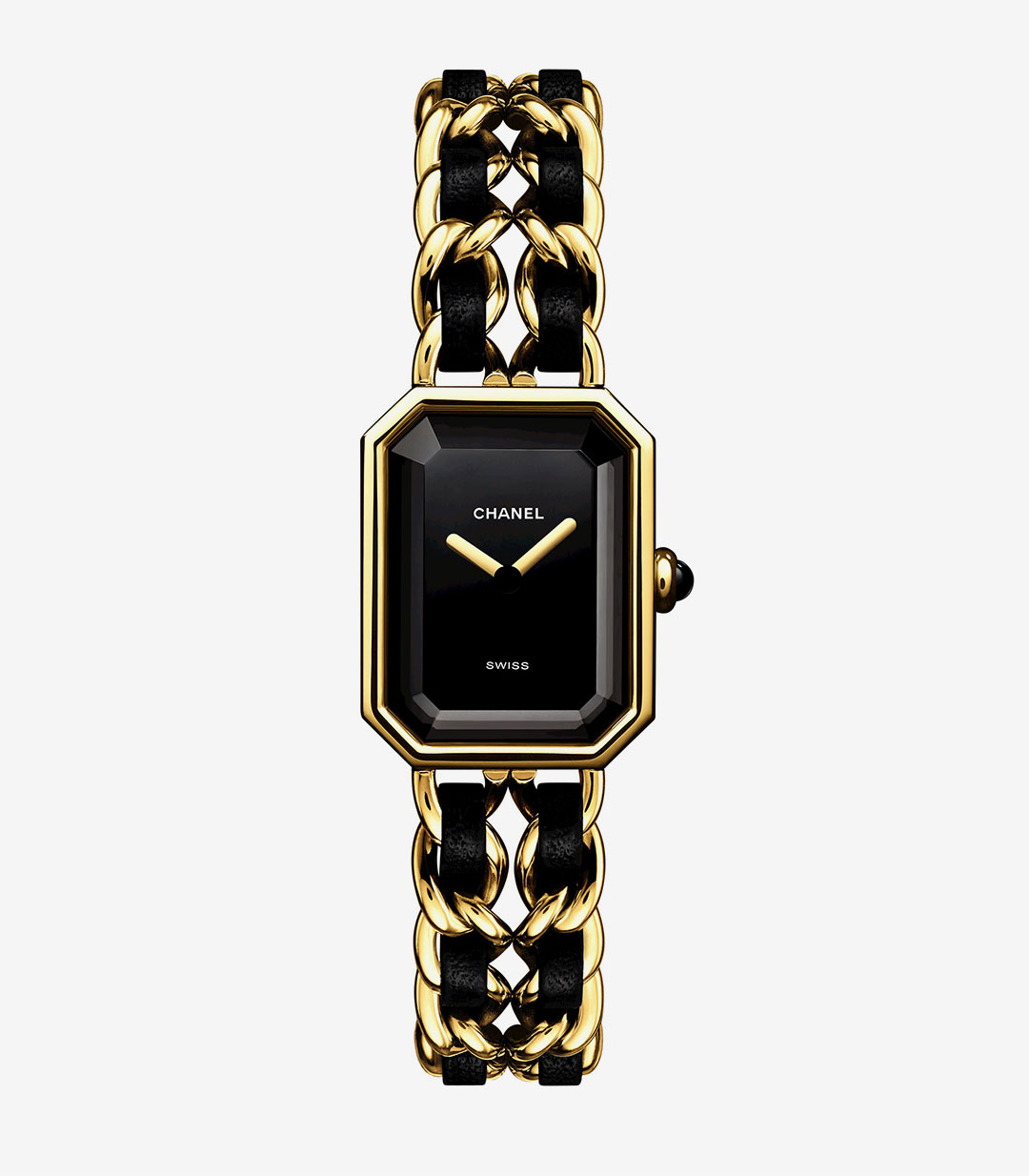
1987: Première
The dial of the Première references the geometric architecture of the Place Vendôme. With no dial markers and a casual, boyish charm, it is a functional jewel for the wrist with a timelessly contemporary character.
‘Première’ watch, gold plated with a chain bracelet interlaced with leather, by CHANEL Watches.
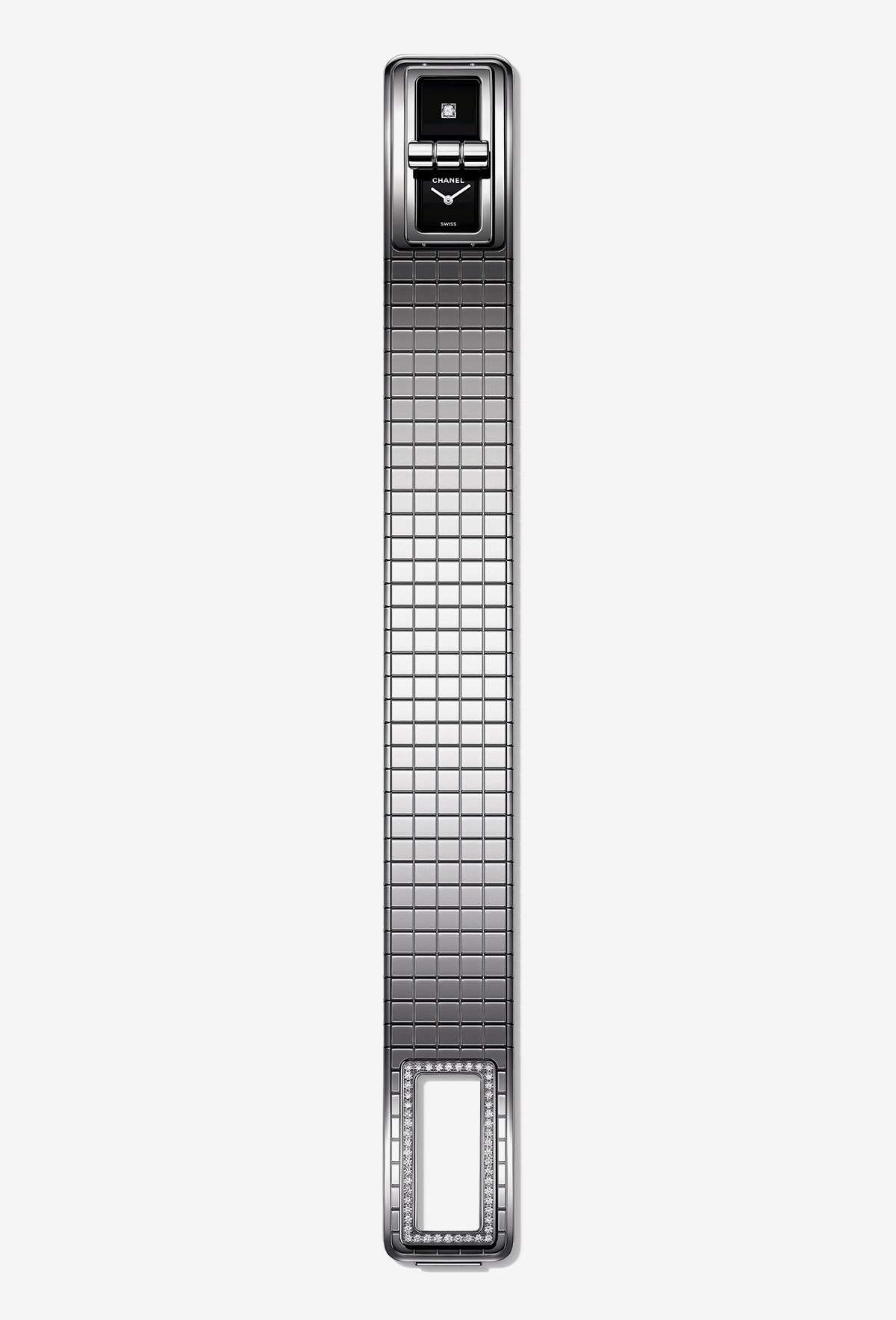
2017: Code Coco
With its somewhat pixelated appearance, the belt-like ‘quilted’ bracelet of the Code Coco creates a futuristic look and an entirely contemporary design take. Code Coco is fitting testament to the new thinking that Chanel is bringing into 21st century watch design.
‘CODE COCO’ watch in steel case, bracelet and bezel, with diamonds, by CHANEL Watches.
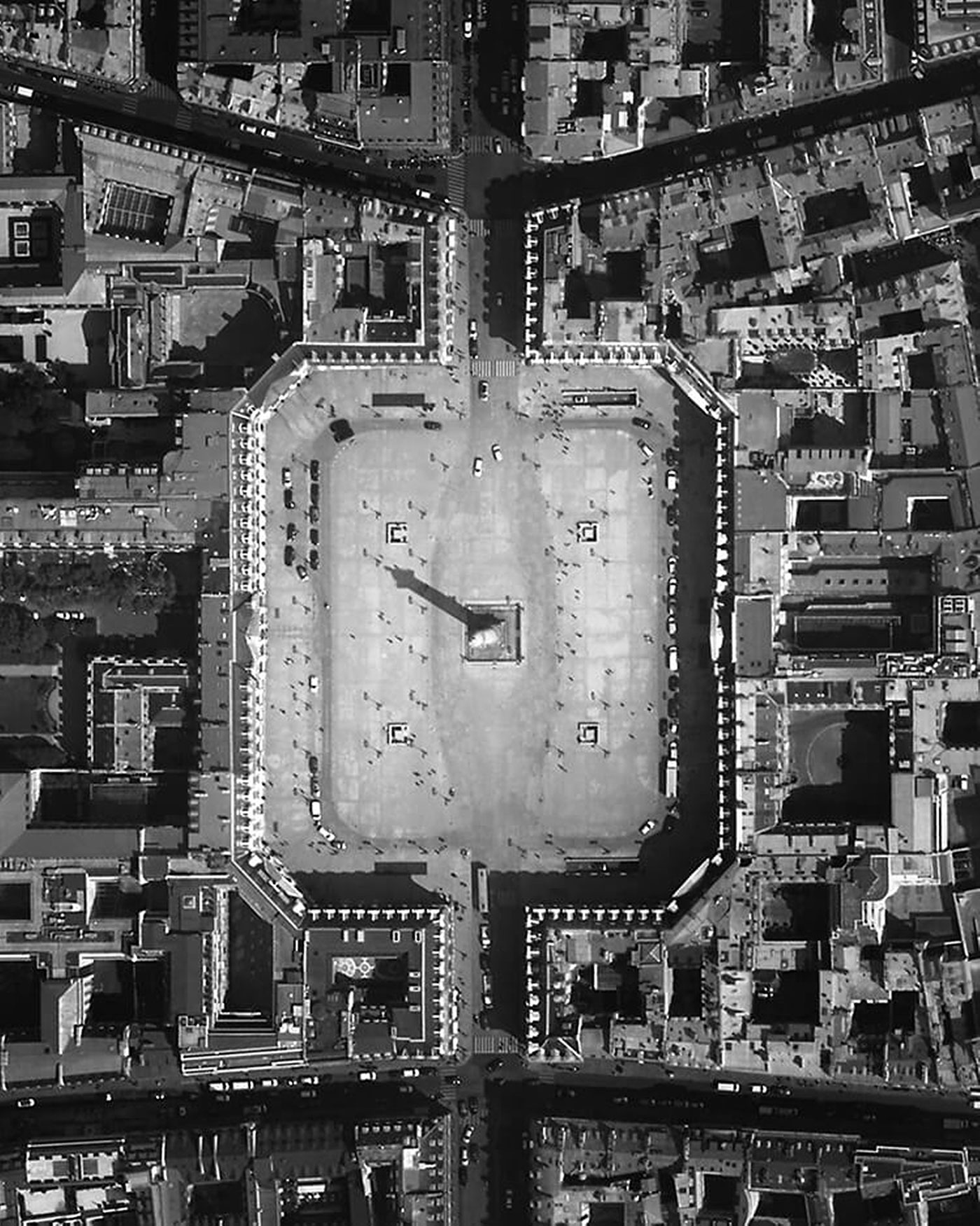
1987: Première
The dial of Chanel’s first watch design, dreamed up by the great Jacques Helleu, a long-term artistic director at the house, is notable for its cut glass dial shape. It was Helleu’s idea to mimic the emerald-cut N°5 bottle stopper, which in turn references the geometric architecture of the Place Vendôme. With no dial markers and a casual, boyish charm, it is a functional jewel for the wrist with a timelessly contemporary character.
Vendôme Place in Paris.
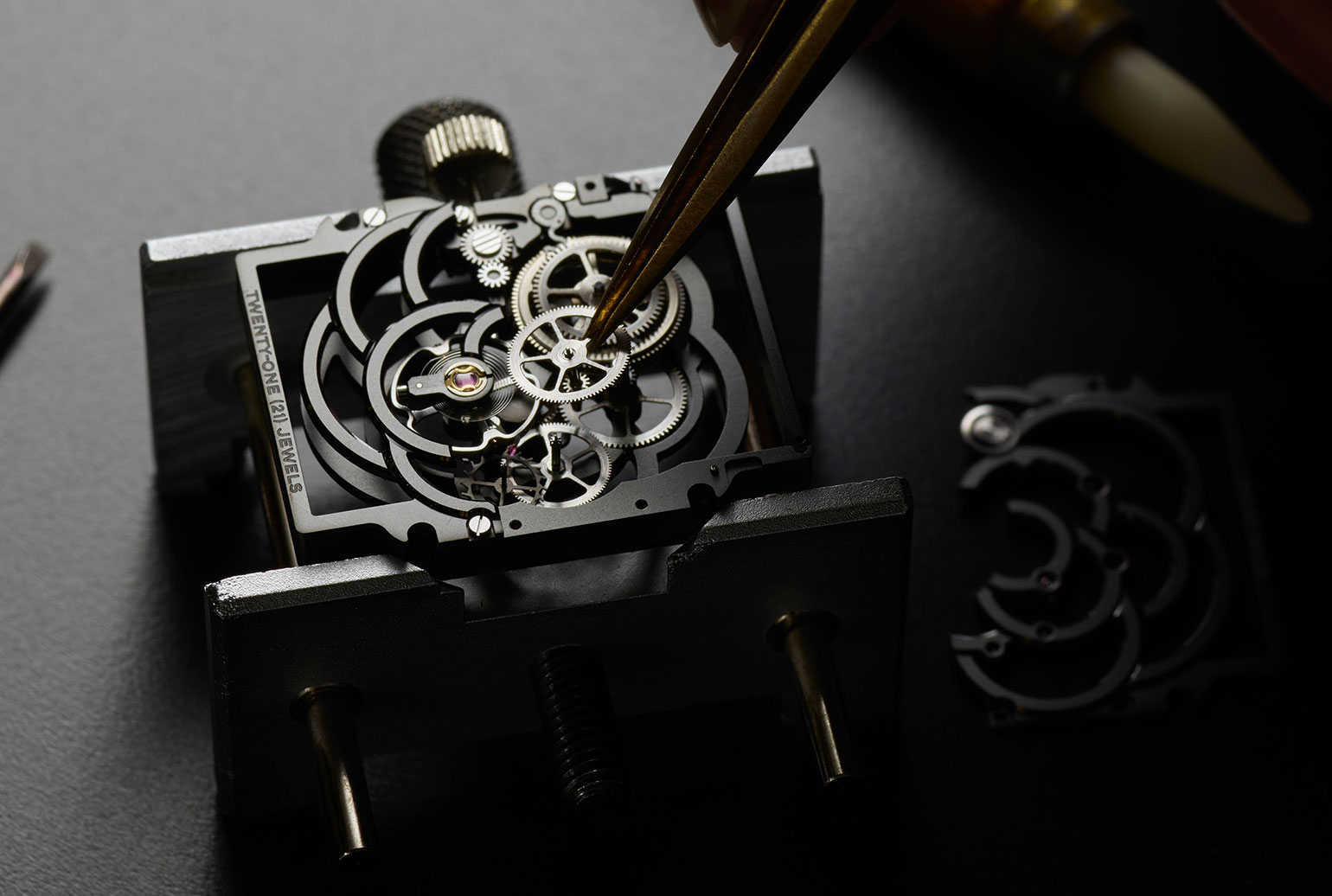
The classic symbols
Pearls, camélias, comets, quilting, chains, lace, and that unmistakable black and white colour code: Chanel’s most recognisable motifs have inspired or directly informed its watch designs. If that seems run-of the-mill in modern brand terms, whether an exquisitely crafted camelia dial or a clasp detail lifted from the 2.55 handbag design, there’s a stylish wit at play that injects classic horlogerie with a covetable fashion sensibility.
Première Camellia Skeleton’ watch with white gold case and bezel, diamonds and black satin strap, by CHANEL Watches.
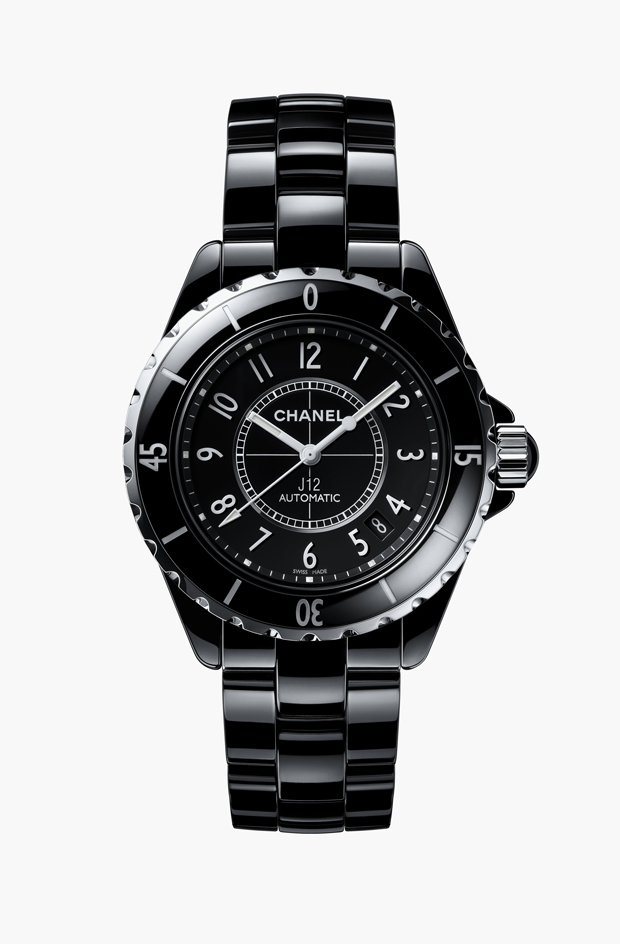
2000: J12
At the turn of the last century, ceramic was still used sparingly in watch design – though Swiss watchmaker Rado had also embraced the new high-tech material as a creative driver. But when the audaciously sporty, non-gender specific black ceramic Chanel J12 was launched, its success was such that it became clear that Chanel had started an entirely new horological conversation in watch design. In 2003, the opalescent white edition added a shot of glamour and proved that Chanel’s deep fashion roots, coupled with its new horological insight, amounted to a rare combination that struck a chord with new generations. Various J12 editions have followed.
'J12’ watch with black ceramic and steel case, undirectional rotating bezel and black ceramic bracelet, by CHANEL Watches.
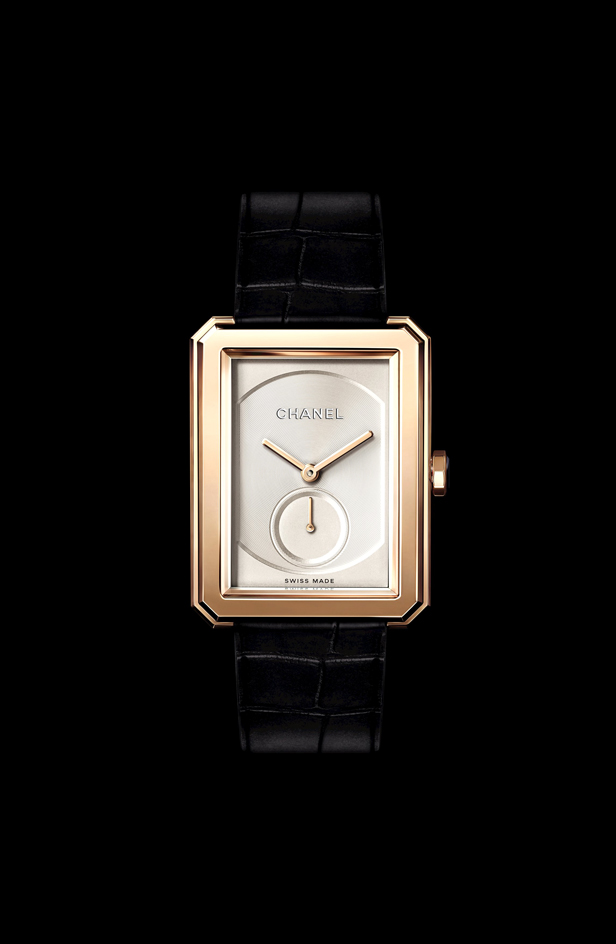
2015: Boy∙Friend
One of our favourite designs of recent times, the Boy∙Friend design plays with scale, shadow and detail to create a covetable timepiece for today. The rectangular form sits almost entirely across the wrist, while the dial, which creates the Boy∙Friend’s modern Deco character, is a masterclass in subtle relief. Subsequent iterations have followed, including the Boy∙Friend Tweed, but we prefer the classic simplicity of the debut designs.
‘Boy∙Friend’ watch with beige bold case, bezel, crown, onyx cabochon, opaline guilloché dial and black alligator strap, by CHANEL Watches.
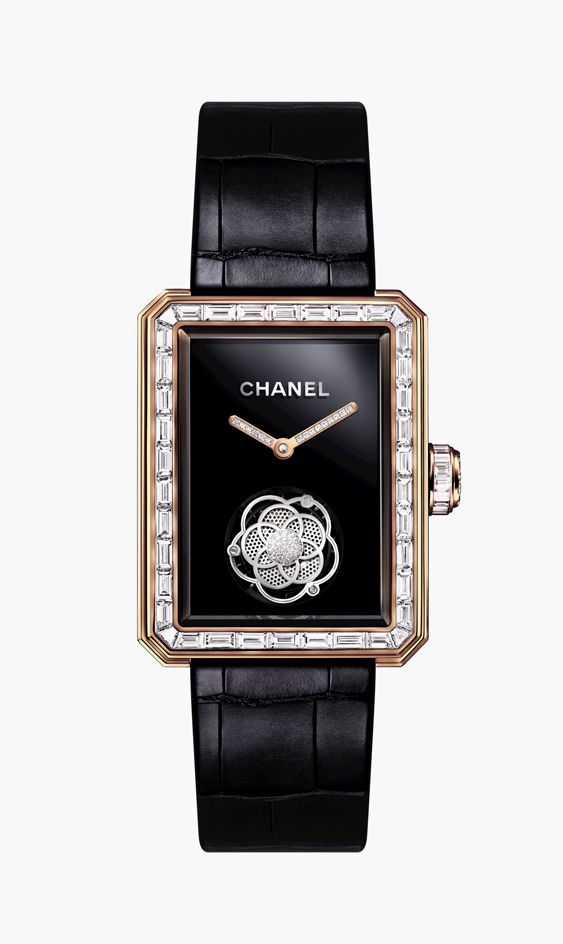
2012: Première Flying Tourbillon
Chanel once again re-imagined a highly complicated Swiss movement and presented it in a decidedly feminine way. Its slightly oversized case only ups the Première Flying Tourbillon’s presence on the wrist. But then it’s the main act – in the form of a spinning camélia or a comet – that underlines its importance as a compelling piece of jewelled tech.
‘Première Flying Tourbillon’ watch in black gold case, bezel, crown and tourbillon cabochon with diamonds, white ceramic dial and black alligator strap, by CHANEL Watches.
Wallpaper* Newsletter
Receive our daily digest of inspiration, escapism and design stories from around the world direct to your inbox.
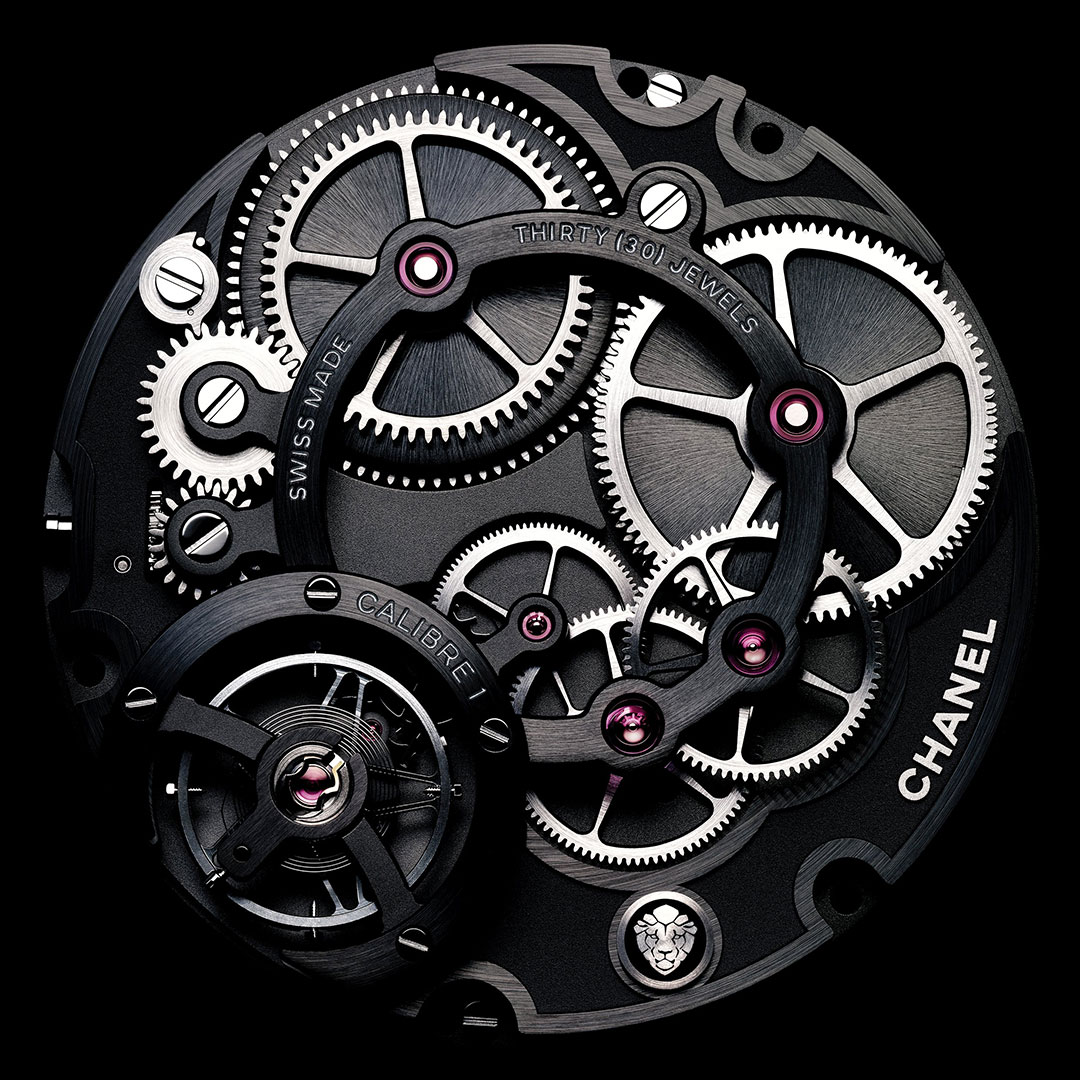
2016: Monsieur de Chanel
A deliberately masculine watch, the Monsieur de Chanel marked a key moment in Chanel’s short history of watchmaking: its first in-house created movement. The CALIBRE 1 with jumping hour and retrograde minute functions was a big step in the right direction for the house, signalling a strong future for its fine horological strand.
‘Monsieur de CHANEL’ watch movement, first CHANEL in-house movement – Calibre I.
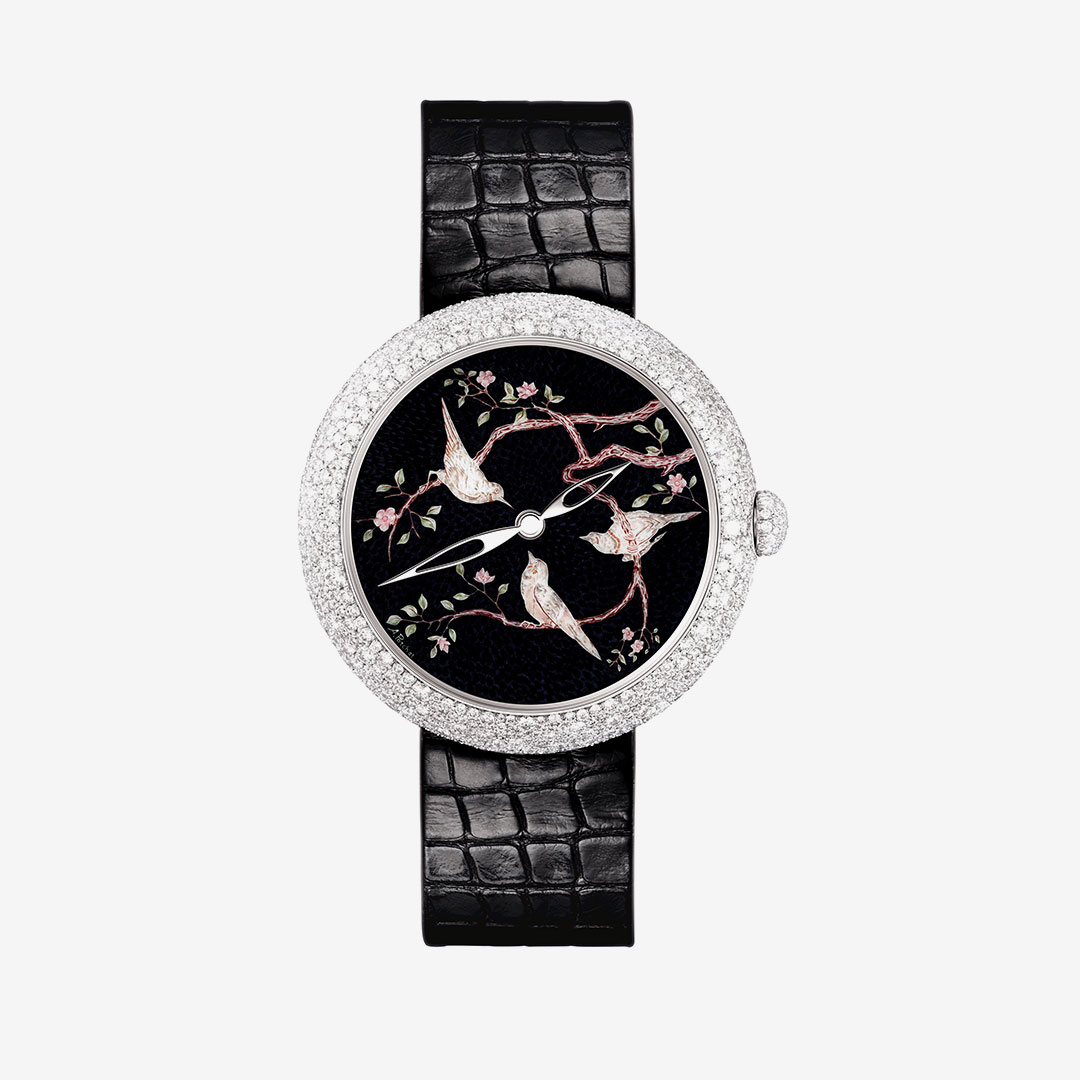
2012: Mademoiselle Privé
With its rare-craft strand, Chanel mines its own couture heritage to create a technique story that is a natural fit with the house character. From embroidery to marquetry, enamelling and glyptic techniques, Chanel has as strong an eye for fine watch artisans as it does for named designers and couturiers. In the grand jeweller tradition of decorative everyday objets, the artistic craft pieces also include limited-edition clocks.
'Mademoiselle Privé’ watch in white gold case with diamonds, Coromandel dial in ‘Grand Feu’ enamel and black alligator strap, by CHANEL Watches.
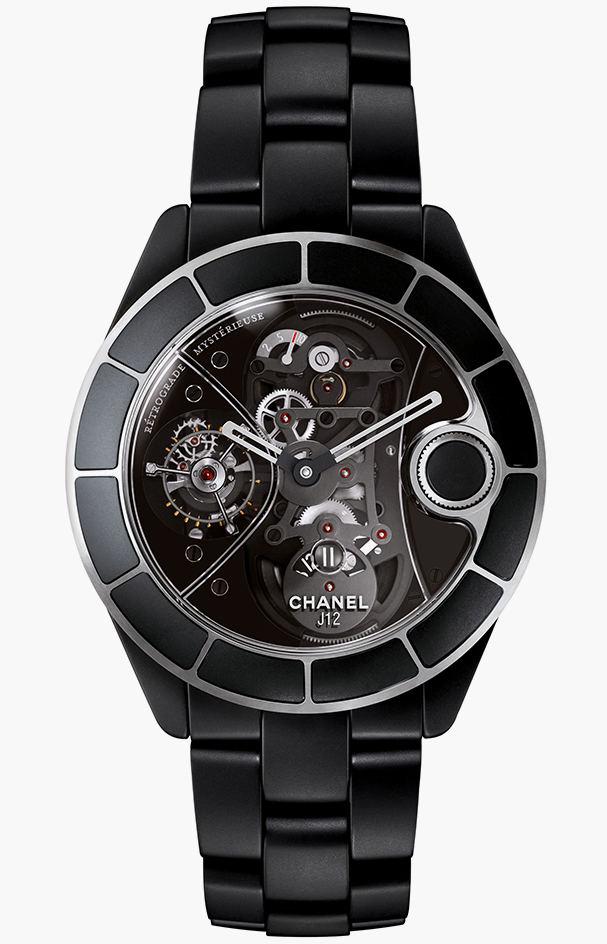
2010: J12 Mysterious Retrograde
A respectful nod to the rare skills of its Swiss manufacture neighbours, Chanel has taken surprising risks by entering the world of haute horlogerie, consulting with local horological think tank Renaud et Papi. As much as we’d love to tell you all about the finer details of the J12 Mysterious Retrograde, it’s so complicated, we’d need a whole lot more time. In short, this concept design incorporates: a tourbillon (a mechanism designed to counter the effects of gravity when the timepiece moves on the wrist), a digital minutes display, a retrograde minutes hand, a 10-day power reserve and a highly-satisfying-to-operate retractable vertical crown.
‘J12 RMT’ watch with white gold case back, buckle and bezel with 12 ceramic inserts and matt black ceramic bracelet, by CHANEL Watches.
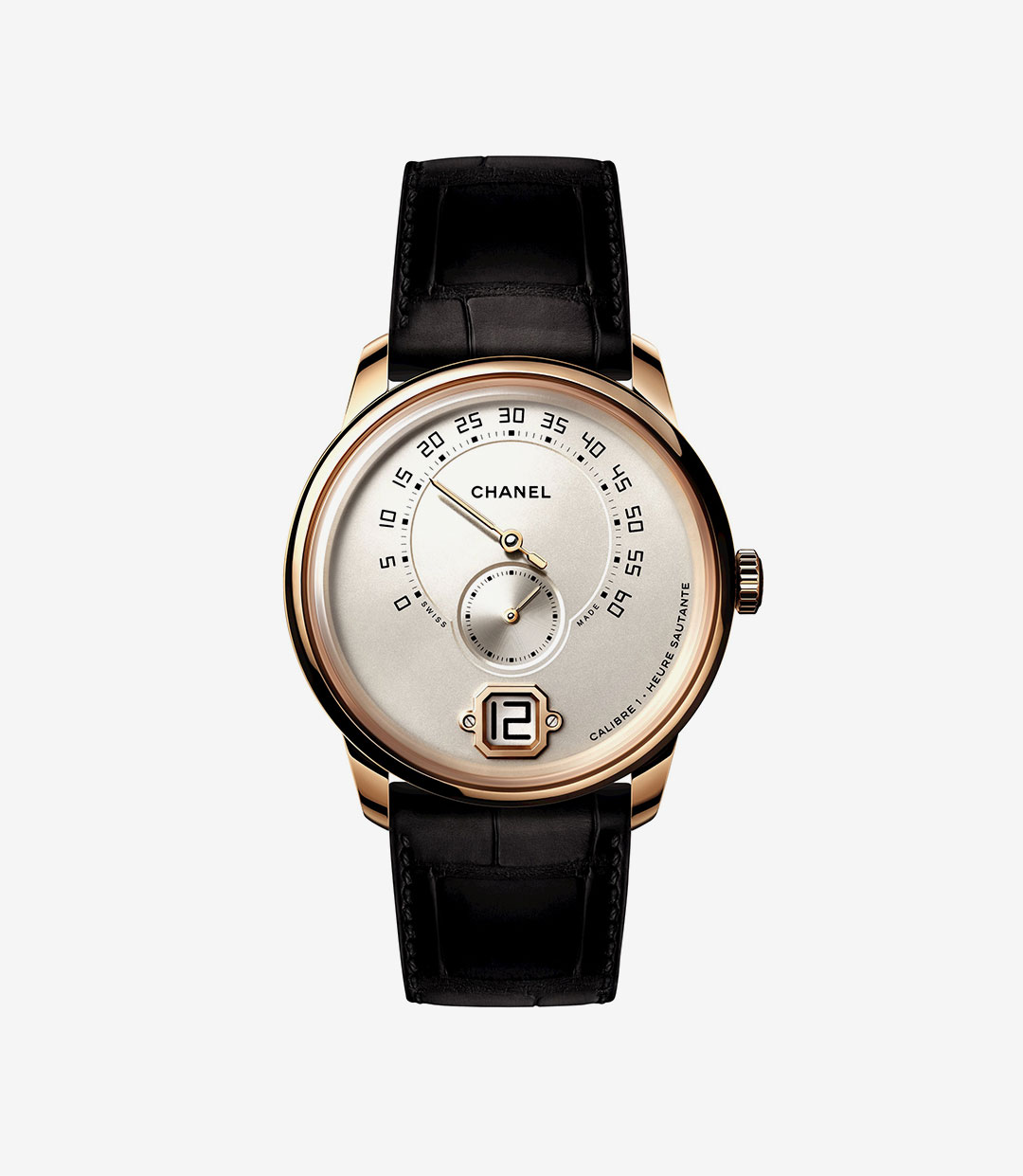
2016: Monsieur de Chanel
A deliberately masculine watch, the launch of the Monsieur de Chanel also marked a key moment in Chanel’s short history of watchmaking: its first in-house created movement.
‘Monsieur de CHANEL’ watch in beige gold case and crown, ivory opaline dial and black alligator strap, by CHANEL Watches.
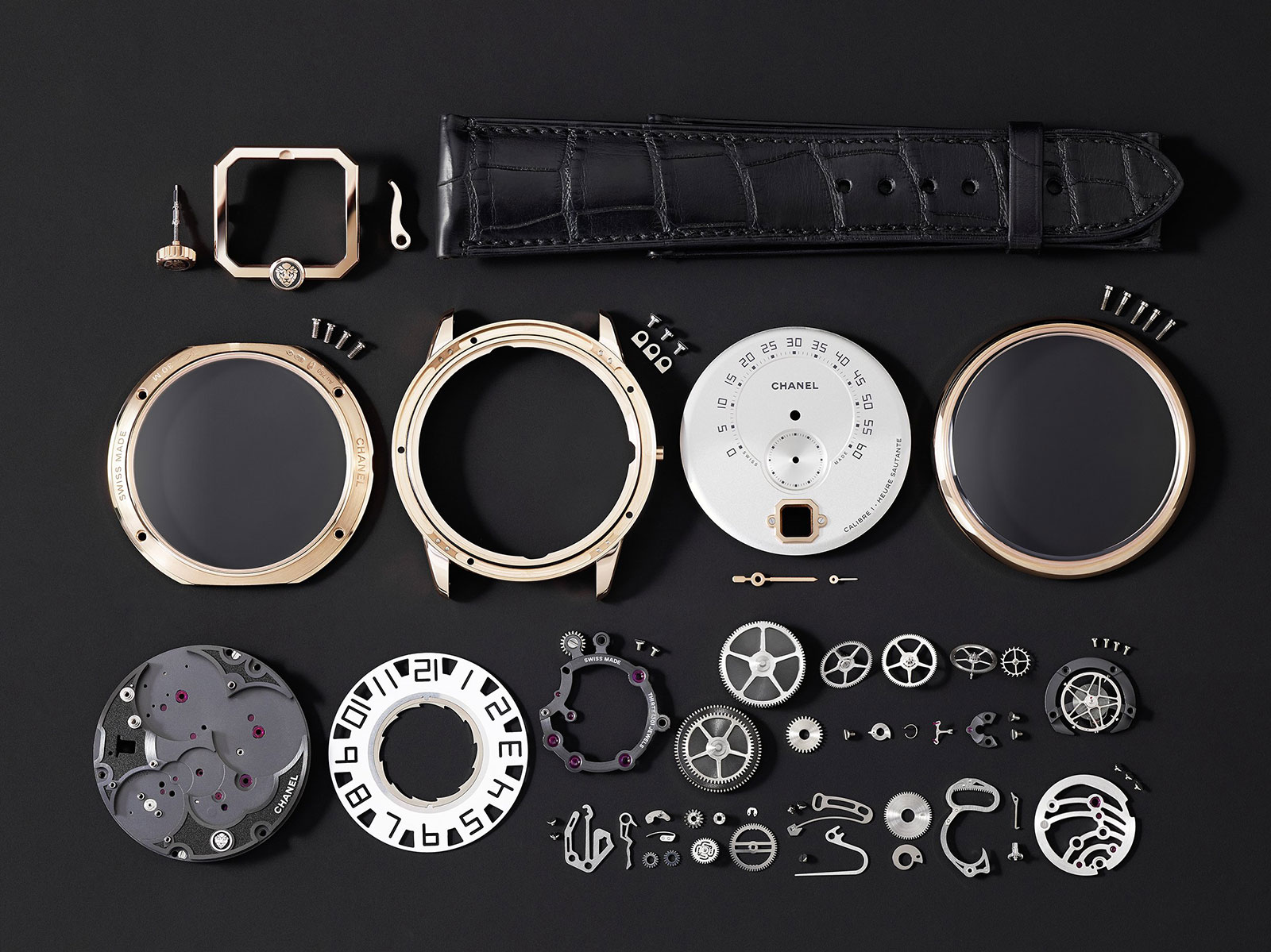
2016: Monsieur de Chanel
The CALIBRE 1, Chanel’s first in-house created movement, - with jumping hour and retrograde minute functions - was a step in the right direction for the house but the big-date dial and sizeable case was a tad clumsy, signalling room for improvement.
‘Monsieur de CHANEL’ watch in beige gold case and crown, ivory opaline dial and black alligator strap, by CHANEL Watches.
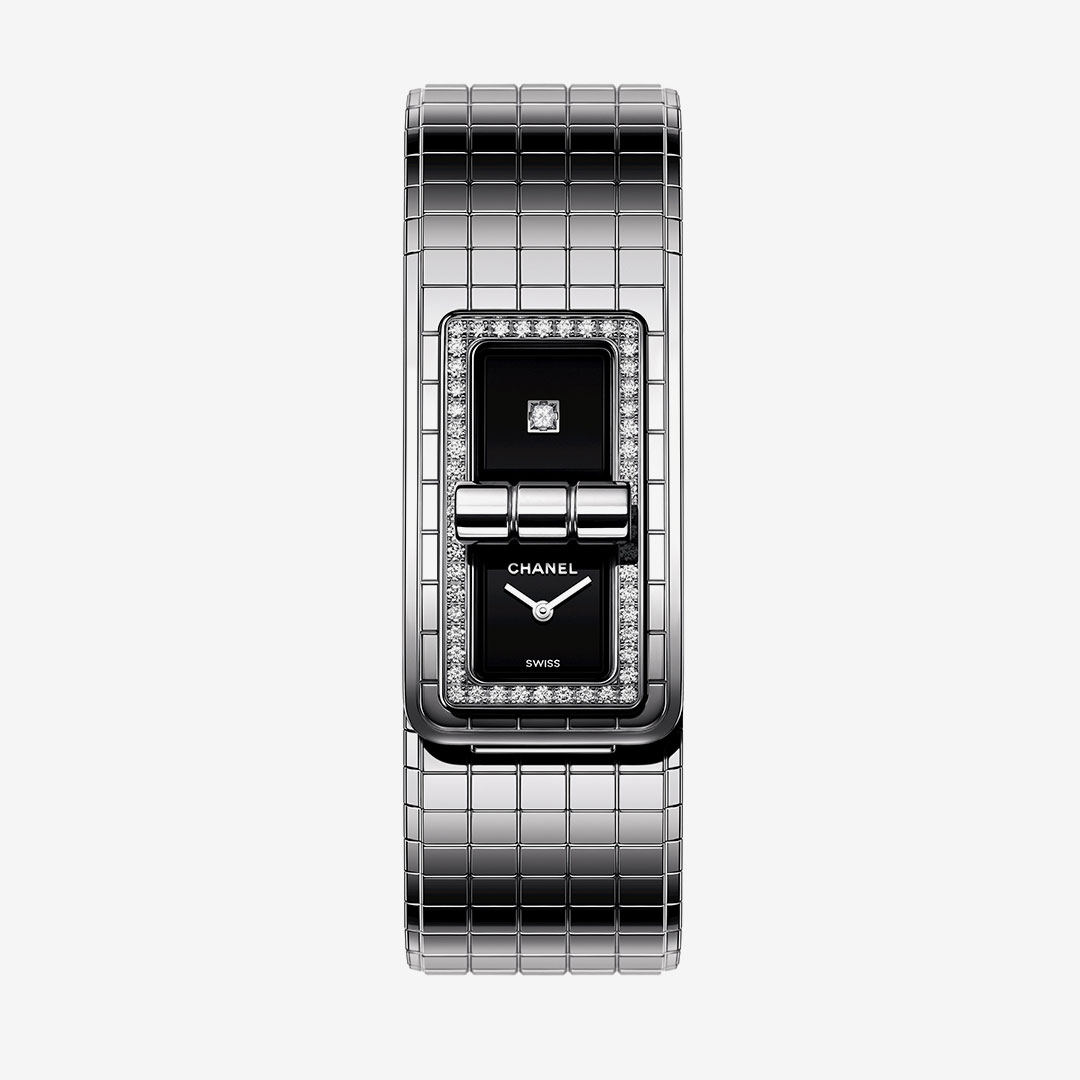
2017: Code Coco
An everyday bracelet-watch, Code Coco is a sleek riff on the secret watch concept (traditionally, a high jewellery bracelet engineered to hide a surprise timepiece element). The clasp of the 2.55 bag is created in miniature, so that it can also be twisted to sit along the dial, hiding it in the process.
‘CODE COCO’ watch in steel case, bracelet and bezel, with diamonds, by CHANEL Watches.
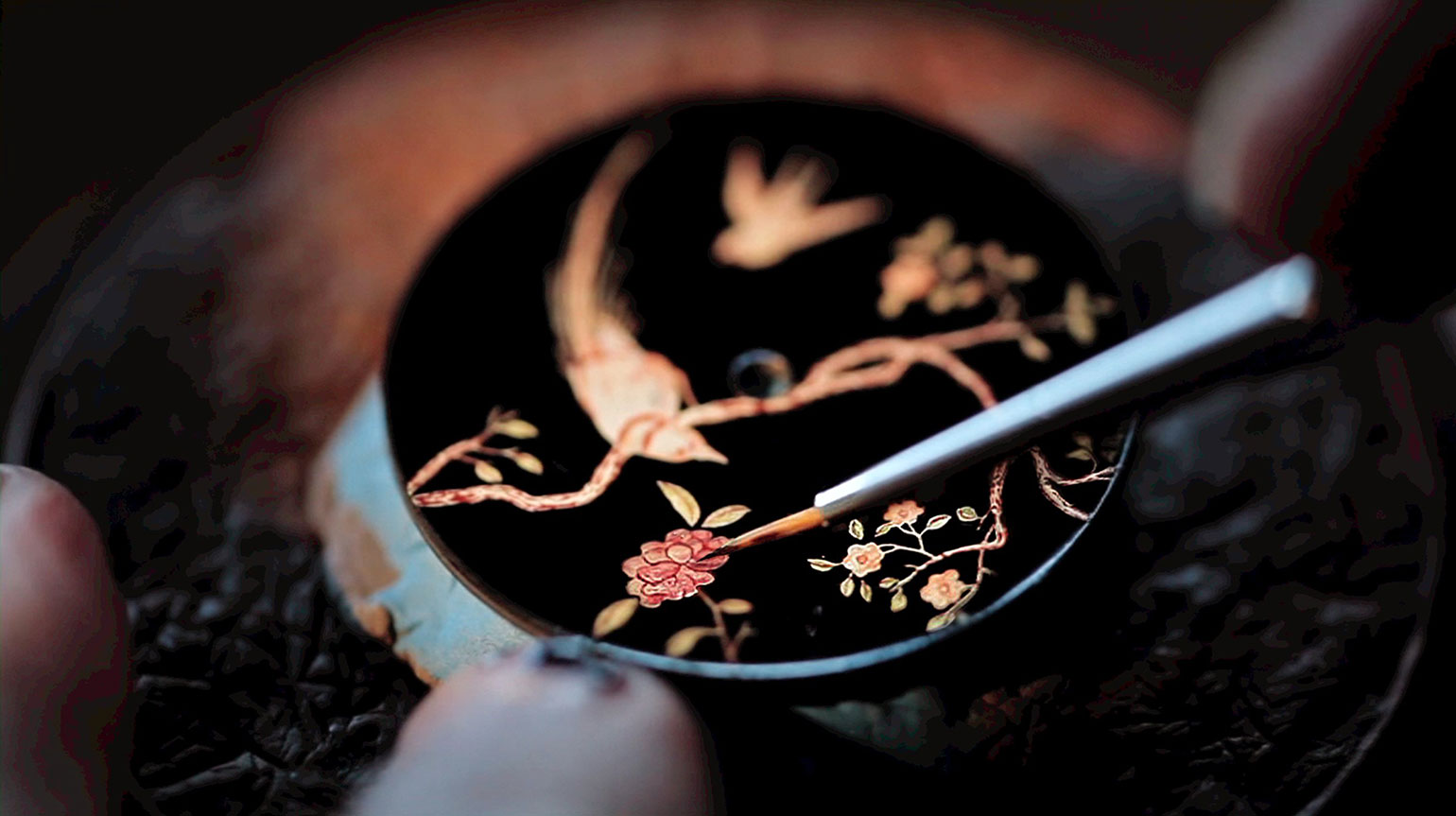
2012: Mademoiselle Privé
In the grand jeweller tradition of decorative everyday objets, the house works with the world’s top horological enamellists to create one-off watch and limited-edition clock designs. Here, decorative details from the coromandel screens that dominated Chanel’s Paris apartment, are realised in miniature on the watch dial.
Making-of the Mademoiselle Privé Coromandel watch.
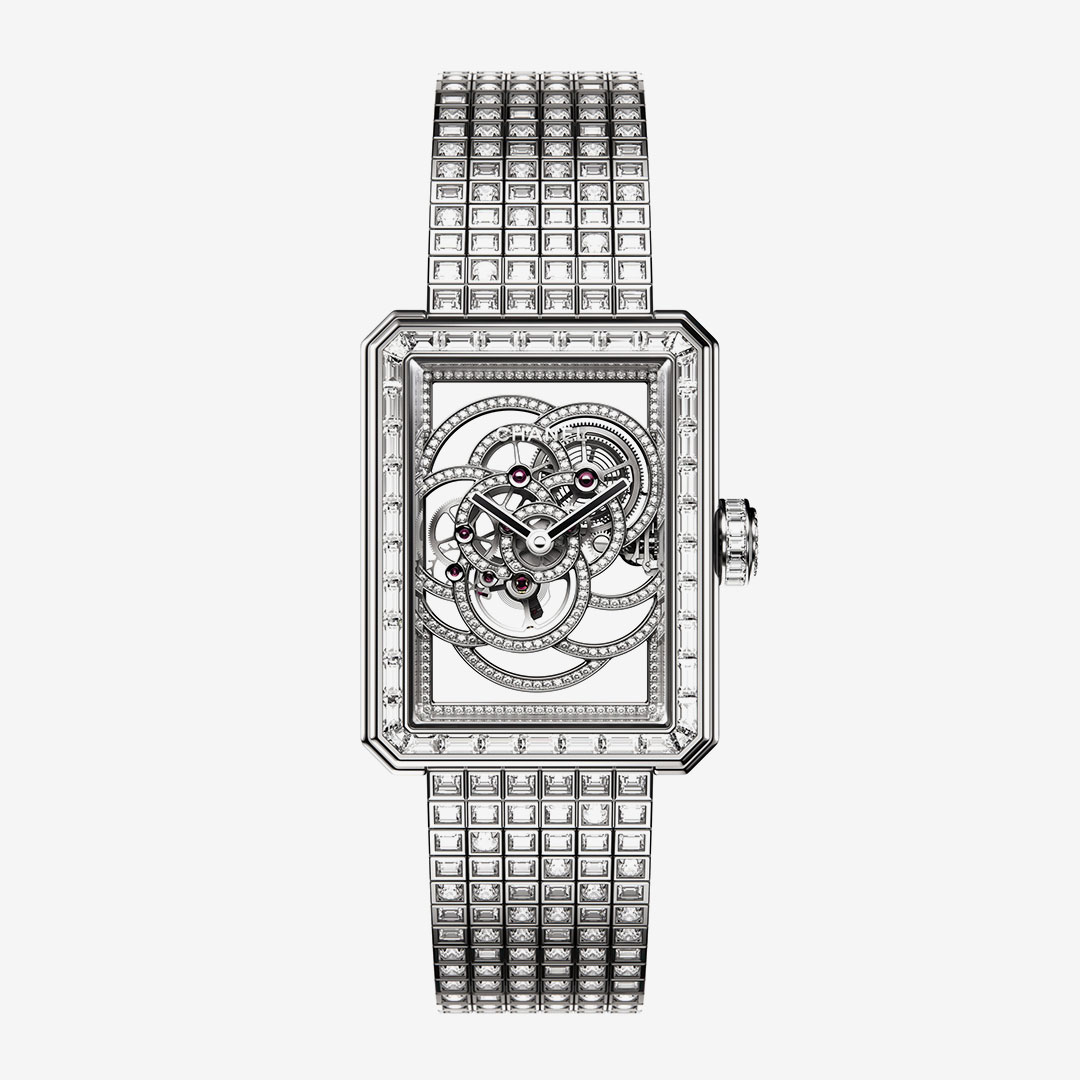
2017: Première Camélia Skeleton
Another great technique story realised in a seriously stylish way. Having launched its skeleton movement, the Calibre 2, this year, Chanel’s horological design team smartly settled on the camelia motif as the narrative instigator. It’s a naturally graphic design fit for the see-through technology typical of the technique. The baguette-set diamonds are a powerful extra.
Première Camellia Skeleton’ watch with white gold case and bezel, diamonds and black satin strap, by CHANEL Watches.
Caragh McKay is a contributing editor at Wallpaper* and was watches & jewellery director at the magazine between 2011 and 2019. Caragh’s current remit is cross-cultural and her recent stories include the curious tale of how Muhammad Ali met his poetic match in Robert Burns and how a Martin Scorsese Martin film revived a forgotten Osage art.
-
 All-In is the Paris-based label making full-force fashion for main character dressing
All-In is the Paris-based label making full-force fashion for main character dressingPart of our monthly Uprising series, Wallpaper* meets Benjamin Barron and Bror August Vestbø of All-In, the LVMH Prize-nominated label which bases its collections on a riotous cast of characters – real and imagined
By Orla Brennan
-
 Maserati joins forces with Giorgetti for a turbo-charged relationship
Maserati joins forces with Giorgetti for a turbo-charged relationshipAnnouncing their marriage during Milan Design Week, the brands unveiled a collection, a car and a long term commitment
By Hugo Macdonald
-
 Through an innovative new training program, Poltrona Frau aims to safeguard Italian craft
Through an innovative new training program, Poltrona Frau aims to safeguard Italian craftThe heritage furniture manufacturer is training a new generation of leather artisans
By Cristina Kiran Piotti